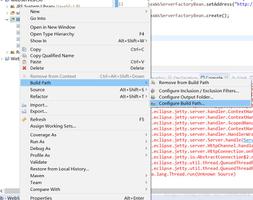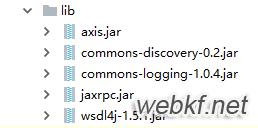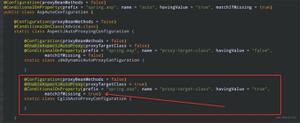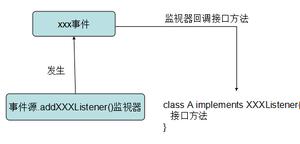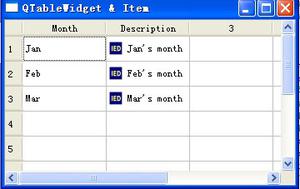用Axis构建java WEB Service

一、Axis安装 1、环境 jdk1.5,Tomcat 5.0
2、到 http://ws.apache.org/Axis/网站下载Axis安装包
3、解压缩安装包,将Axis_UNZIP_PATH\Axis-version\webapps下的Axis包拷贝到TOMCAT_HOME\webapps\下,以下约定Axis_HOME为该TOMCAT_HOME\webapps\Axis目录
4、启动tomcat,访问http://localhost:8080/Axis 检查安装是否成功
5、以上步骤执行成功,可以开发webservice例子了
Axis支持三种web service的部署和开发,分别为:1、Dynamic Invocation Interface ( DII) 2、Stubs方式 3、Dynamic Proxy方式
下面分别举例说明:
二、编写DII(Dynamic Invocation Interface )方式web服务
1.编写服务端程序HelloClient
public class HelloClient
{
public String getName(String name)
{
return "hello "+name;
}
}
2、将源码拷贝到Axis_HOME下,重命名为 HelloClient.jws
3、访问连接http://localhost:8080/Axis/HelloClient.jws?wsdl,页面显示Axis自动生成的wsdl
4、编写访问服务的客户端 TestHelloClient.java
import org.apache.Axis.client.Call;
import org.apache.Axis.client.Service;
import javax.xml.namespace.QName;
import javax.xml.rpc.ServiceException;
import java.net.MalformedURLException;
import java.rmi.RemoteException;
public class SayHelloClient2
{
public static void main(String[] args)
{
try
{
String endpoint =
"http://localhost:8080/Axis/HelloClient.jws";
Service service = new Service();
Call call = null;
call = (Call) service.createCall();
call.setOperationName(new QName(
"http://localhost:8080/Axis/HelloClient.jws",
"getName"));
call.setTargetEndpointAddress
(new java.net.URL(endpoint));
String ret = (String) call.invoke(new Object[]
{"zhangsan"});
System.out.println("return value is " + ret);
}
catch (Exception ex)
{
ex.printStackTrace();
}
}
}
三、编写Dynamic Proxy方式访问服务
1、编写部署服务端程序,同上边DII方式,本次仍使用上边部署的HelloClient
2、编写代理接口
public interface HelloClientInterface
extends java.rmi.Remote
{
public String getName(String name)
throws java.rmi.RemoteException;
}
3、编写并执行客户端程序TestHelloClient.java
import javax.xml.rpc.Service;
import javax.xml.rpc.ServiceFactory;
import java.net.URL;
import javax.xml.namespace.QName;
public class TestHelloClient
{
public static void main(String[] args)
{
try
{
String wsdlUrl =
"http://localhost:8080/Axis/HelloClient.jws?wsdl";
String nameSpaceUri =
"http://localhost:8080/Axis/HelloClient.jws";
String serviceName = "HelloClientService";
String portName = "HelloClient";
ServiceFactory serviceFactory =
ServiceFactory.newInstance();
Service afService =
serviceFactory.createService(new URL(wsdlUrl),
new QName(nameSpaceUri, serviceName));
HelloClientInterface proxy = (HelloClientInterface)
afService.getPort(new QName(
nameSpaceUri, portName),
HelloClientInterface.class);
System.out.println
("return value is "+proxy.getName("john") ) ;
}catch(Exception ex)
{
ex.printStackTrace() ;
}
}
}
四、编写wsdd发布web服务,编写stub client访问web服务
1、编写服务端程序server,SayHello.java,编译server.SayHello.java
package server;
public class SayHello
{
public String getName(String name)
{
return "hello "+name;
}
}
2.编写LogHandler.java
import org.apache.Axis.AxisFault;
import org.apache.Axis.Handler;
import org.apache.Axis.MessageContext;
import org.apache.Axis.handlers.BasicHandler;
import java.util.Date;
public class LogHandler
extends BasicHandler
{
public void invoke
(MessageContext msgContext)
throws AxisFault
{
/** Log an access each time
we get invoked.
*/
try {
Handler serviceHandler
= msgContext.getService();
Integer numAccesses =
(Integer)serviceHandler.getOption("accesses");
if (numAccesses == null)
numAccesses = new Integer(0);
numAccesses = new Integer
(numAccesses.intValue() + 1);
Date date = new Date();
String result =
date + ": service " +
msgContext.getTargetService() +
" accessed " + numAccesses + " time(s).";
serviceHandler.setOption
("accesses", numAccesses);
System.out.println(result);
} catch (Exception e)
{
throw AxisFault.makeFault(e);
}
}
}
3、编写wsdd文件
deploy.wsdd
<deployment xmlns=
"http://xml.apache.org/Axis/wsdd/"
xmlns:java=
"http://xml.apache.org/Axis/wsdd/providers/java">
<handler name="print" type="java:LogHandler"/>
<service name="sayhello"
provider="java:RPC">
<requestFlow>
<handler type="print"/>
</requestFlow>
<parameter name="className"
value="server.SayHello"/>
<parameter name="allowedMethods"
value="*"/>
</service>
</deployment>
3、将编译后的文件拷贝到Axis_HOME/WEB-INF/classes下,如:D:\tomcat\webapps\Axis\WEB-INF\classes
4、发布服务:
java org.apache.Axis.client.AdminClient deploy.wsdd
5、生成client stub文件
a:方式1
将SayHello.java拷贝到Axis_HOME/下,重命名为SayHello.jws,
执行下面的命令生存client stub
java org.apache.Axis.wsdl.WSDL2Java
-p client http://localhost:8080
/Axis/services/SayHello.jws?wsdl
b:方式2
执行如下命令生成SayHello.wsdl
java org.apache.Axis.wsdl.Java2WSDL
-oSayHello.wsdl -lhttp://localhost:8080
/Axis/services/SayHello -nsayhello server.SayHello
执行如下命令生成client stub
java org.apache.Axis.wsdl.WSDL2Java
SayHello.wsdl -p client
生成的stub client文件列表为:
1.SayHello.java
2.SayHelloService.java。
3.SayHelloServiceLocator.java
4.SayHelloSoapBindingStub.java
6、编写客户端程序,编译并执行
public class SayHelloClient
{
public static void main(String[] args)
{
try
{
SayHelloService service = new client.
SayHelloServiceLocator();
client.SayHello_PortType
client = service.getSayHello();
String retValue=client.getName("zhangsan");
System.out.println(retValue);
}
catch (Exception e)
{
System.err.println
("Execution failed. Exception: " + e);
}
}
}
您也可以写server-config.wsdd
<?xml version="1.0" encoding="UTF-8"?>
<deployment xmlns="http://xml.apache.org/axis/wsdd/"
xmlns:java="http://xml.apache.org/axis/wsdd/providers/java">
<globalConfiguration>
<parameter name="adminPassword" value="admin"/>
<parameter name="attachments.implementation"
value="org.apache.axis.attachments.AttachmentsImpl"/>
<parameter name="sendXsiTypes" value="true"/>
<parameter name="sendMultiRefs" value="true"/>
<parameter name="sendXMLDeclaration" value="true"/>
<parameter name="axis.sendMinimizedElements" value="true"/>
<requestFlow>
<handler type="java:org.apache.axis.handlers.JWSHandler">
<parameter name="scope" value="session"/>
</handler>
<handler type="java:org.apache.axis.handlers.JWSHandler">
<parameter name="scope" value="request"/>
<parameter name="extension" value=".jwr"/>
</handler>
</requestFlow>
</globalConfiguration>
<handler name="LocalResponder" type="java:org.apache.axis.transport.local.LocalResponder"/>
<handler name="URLMapper" type="java:org.apache.axis.handlers.http.URLMapper"/>
<handler name="Authenticate" type="java:org.apache.axis.handlers.SimpleAuthenticationHandler"/>
<handler name="print" type="java:stub.LogHandler"/>
<service name="sayhello" provider="java:RPC">
<requestFlow>
<handler type="print"/>
</requestFlow>
<parameter name="className" value="stub.server.SayHello"/>
<parameter name="allowedMethods" value="*"/>
</service>
<transport name="http">
<requestFlow>
<handler type="URLMapper"/>
<handler type="java:org.apache.axis.handlers.http.HTTPAuthHandler"/>
</requestFlow>
</transport>
<transport name="local">
<responseFlow>
<handler type="LocalResponder"/>
</responseFlow>
</transport>
</deployment>
以上是 用Axis构建java WEB Service 的全部内容, 来源链接: utcz.com/z/391973.html

